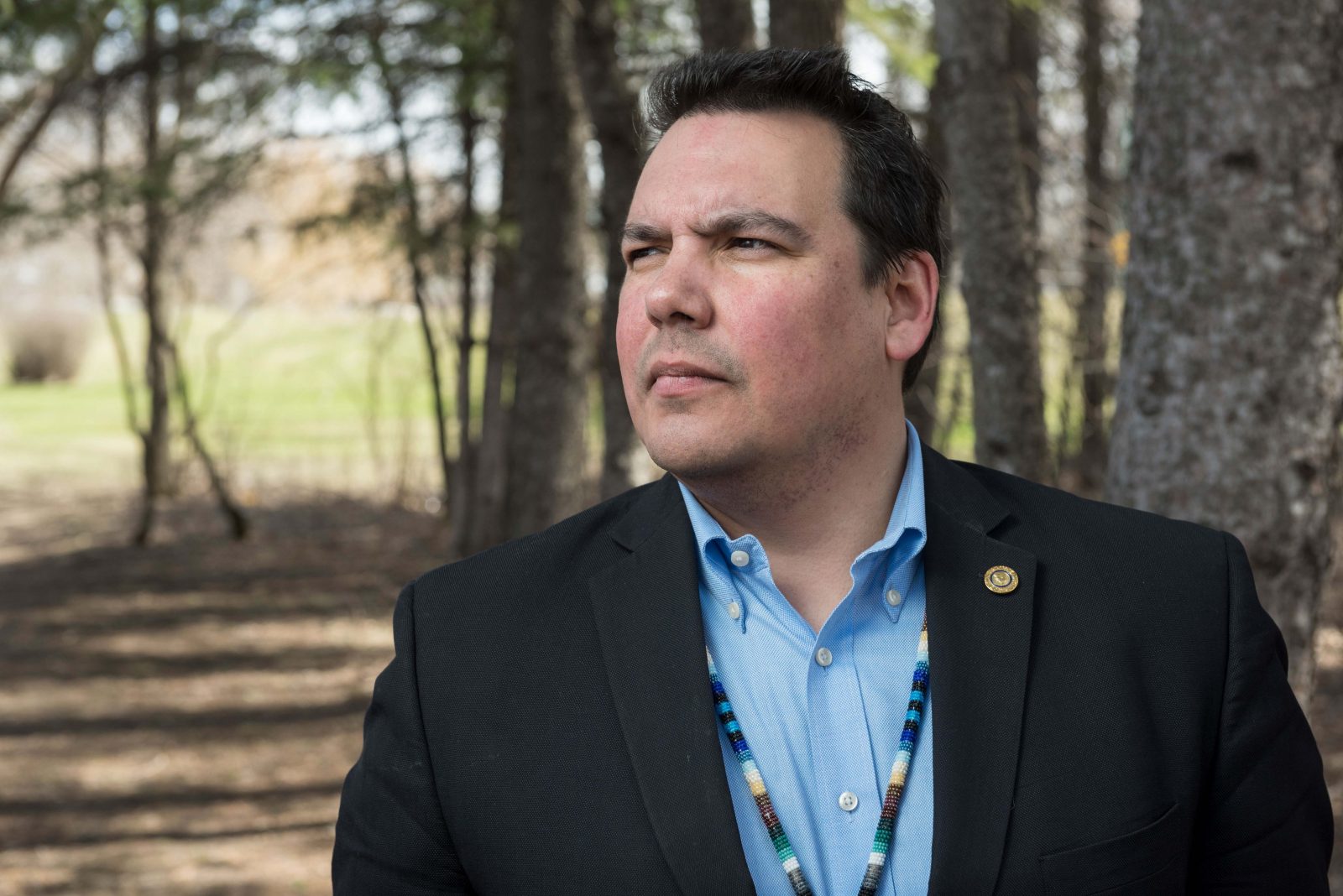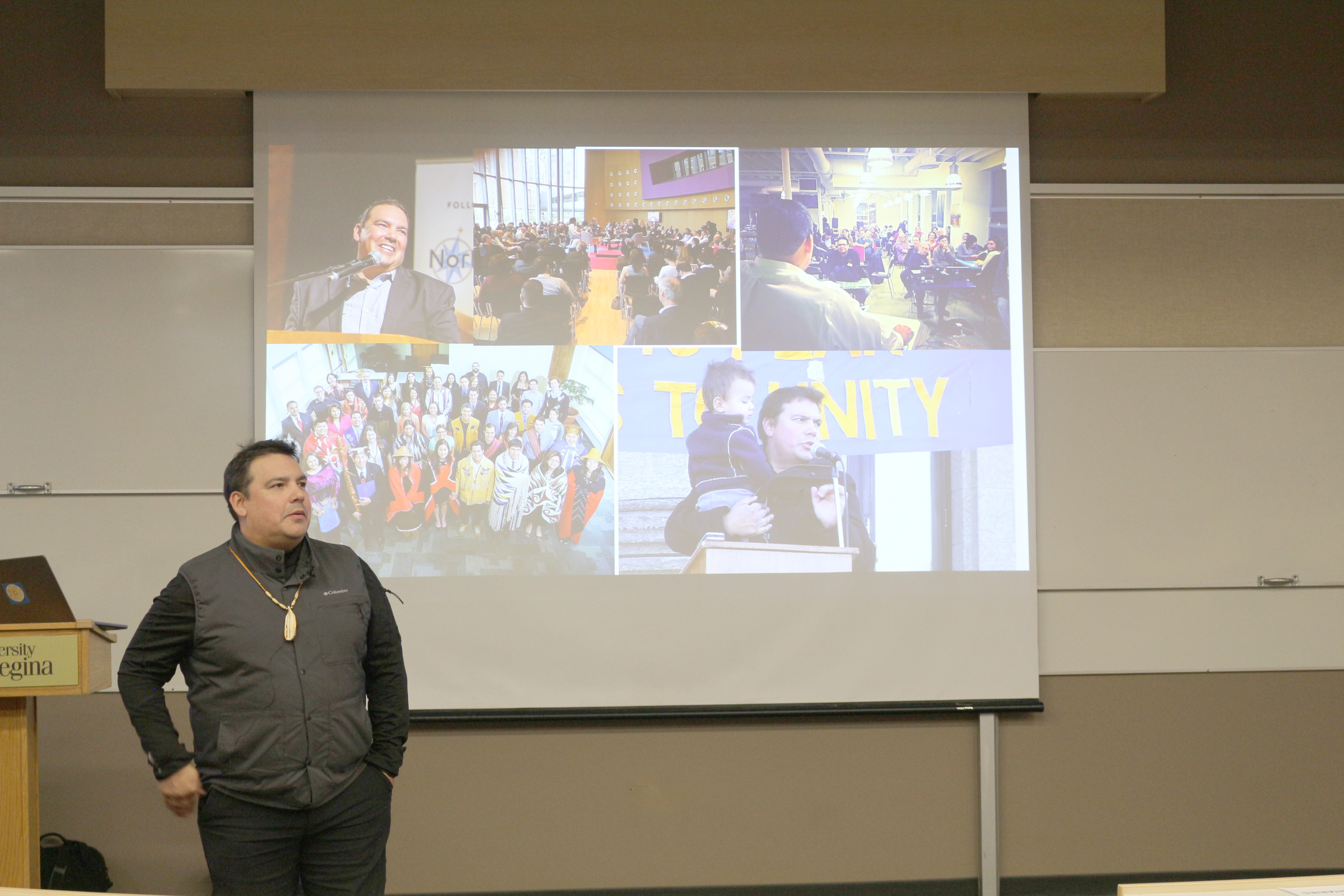
Truth and Reconciliation
Presence, Practice, Pedagogy, and Permanence in Indigenous Education
Since the 2015 release of the Truth and Reconciliation Commission’s final report, Canadian educational institutions have taken varying steps toward reconciliation. A decade later, where do we stand? How can we assess the progress of reconciliation, identify improvements, and—most importantly—safeguard reconciliation in an age of political change and shifting financial priorities?
The Faculty of Education is honoured to have Dr. Niigaan Sinclair visit us and share his perspective on where we are and the path forward.
Dr. Niigaan Sinclair, an Anishinaabe scholar from Peguis First Nation, is an award-winning writer, editor, and professor of Indigenous Studies at the University of Manitoba. In 2022, Maclean’s named him one of the most influential people in Canada. A multiple-time nominee for Canadian Columnist of the Year—winning in 2018—his commentary appears weekly across Canada, from the pages of The Winnipeg Free Press to TV shows on CBC and APTN, as well as on his co-hosted podcast, Niigaan and the Lone Ranger.
Sinclair’s first book, Wînipêk: Visions of Canada from an Indigenous Centre (McClelland & Stewart, 2024) became a national bestseller and won the 2024 Governor General’s Award for non-fiction. A former secondary school teacher, Sinclair was named the 2019 Peace Educator of the Year by the Peace and Justice Studies Association, based at Georgetown University in Washington, DC.

Caption: Dr. Niigaan Sinclair. Photo Credit: The Faculty of Education.
Sinclair is glad to return to Regina, his mother’s hometown and a place deeply connected to his family’s roots. He also highlights the Prairies as home to a rapidly growing, highly employable Indigenous population—an emerging hub of innovation, creativity, and institutional expertise.
As he travels across the country, observing how Canadian educational institutions implement reconciliation to varying degrees, Sinclair continues to reflect on the challenges of advancing Indigenous education within institutional frameworks.
“If Indigenous education can be cut without consequence, it’s not truly integrated,” says Sinclair. “Our goal is to make it as essential as math—something no school would think of eliminating.”
Sinclair advocates for systemic integration of Indigenous perspectives across curricula, emphasizing the need for education systems to honour Indigenous traditions, resist co-optation, and prioritize collective well-being over competitive individualism.
Assessment Model for Incorporating Indigenous Education into Existing School Frameworks
In his keynote, Sinclair presents an assessment model for incorporating Indigenous education into existing school frameworks. This model is built on four key principles: respect, relationality, Indigenous relevancy, and responsibility.
Respect
Respect is foundational. It involves honouring the traditions, experiences, and knowledge that students, their families, and communities bring to education. Respect also includes recognizing and valuing the territories we live and work on—and ensuring that recognition is meaningfully integrated into daily practices.
Relationality
Strong schools are built on genuine relationships. To truly serve their communities, schools must connect in meaningful ways, reflecting local values and realities. This requires moving beyond centralized, often urban-focused mandates and embracing community-driven approaches to education. By working collaboratively with their communities, schools can become more responsive, inclusive, and reflective of the people they are meant to support.
Indigenous Relevancy
Education must align with the aspirations of Indigenous peoples. Elders and leaders often voice a shared concern: students should not have to choose between academic success and their Indigeneity. Too often, earning a diploma means adopting values—such as hyper-individualism and competitiveness—that conflict with Indigenous ways of being.
“When I earned my PhD, I returned to my community feeling accomplished. My Auntie Diane, a respected Elder in our family, acknowledged my achievement but reminded me of what truly mattered—my kinship responsibilities. She handed me a hatchet and said, ‘Congratulations! Now go chop me some wood,’” Sinclair recalls. “Her message was clear: academic credentials are valuable, but they should not replace the importance of being a good relative.”
“Did my Auntie want me to never forget that I'm a nephew? To her, and in Indigenous communities, your kinship and familial relations—and how you live up to them—are the credentials that matter.”

Responsibility
Responsibility requires more than good intentions—it demands tangible action. Many institutions have begun responding to the Calls to Action through initiatives like territorial acknowledgments and school policies. But the focus must now shift to impact. Are these efforts truly making a difference? Are they driving meaningful change?
As educators and leaders, our role isn’t just to implement these initiatives but to ensure they are effective. This requires ongoing reflection, evaluation, and a commitment to continuous improvement.
Towards Indigenous Education
Sinclair outlines a framework for indigenizing schools, drawing from his assessment model. The four principles—presence, practice, pedagogy, and permanence—serve as a touchstone to guide the path forward.
Presence
Presence refers to one-time, symbolic events that briefly disrupt the status quo but lack lasting impact. Examples include Orange Shirt Day or a single visit from an Elder. While these moments raise awareness and highlight Indigenous knowledge, they often feel disconnected and fail to drive meaningful, long-term change.
Practice
Practice goes beyond presence by weaving Indigenous knowledge into everyday routines. This consistency helps normalize Indigenous contributions and nurtures curiosity among students. For example, integrating Indigenous languages into daily announcements can build engagement and respect. However, like presence, practice often depends on Indigenous individuals to lead the work, making progress fragile if programs are discontinued.
Pedagogy
Pedagogy represents a deeper shift, where Indigenous knowledge becomes a natural and integral part of the school’s culture. It extends beyond moments of interruption or curiosity, with students and staff actively engaging in practices that honour Indigenous ways of knowing. Examples include students using Indigenous languages in daily interactions or applying land-based knowledge in learning. This stage is defined by shared responsibility and community-driven education.
Permanence
Permanence is the most profound and rarest level, where Indigenous education is fully embedded into a school’s identity and function. It fosters reciprocal relationships between schools and communities to ensure long-term sustainability. At this stage, Indigenous knowledge is valued as equally essential as core subjects like math or science.
The journey through these principles is not linear. Schools may need to revisit earlier stages to strengthen progress. While presence and practice are important first steps, true reconciliation and systemic change require moving toward pedagogy and permanence— where Indigenous education becomes a way of life, not just an occasional initiative.
Discover our community-based Education programs here. For more information, contact the Faculty of Education.